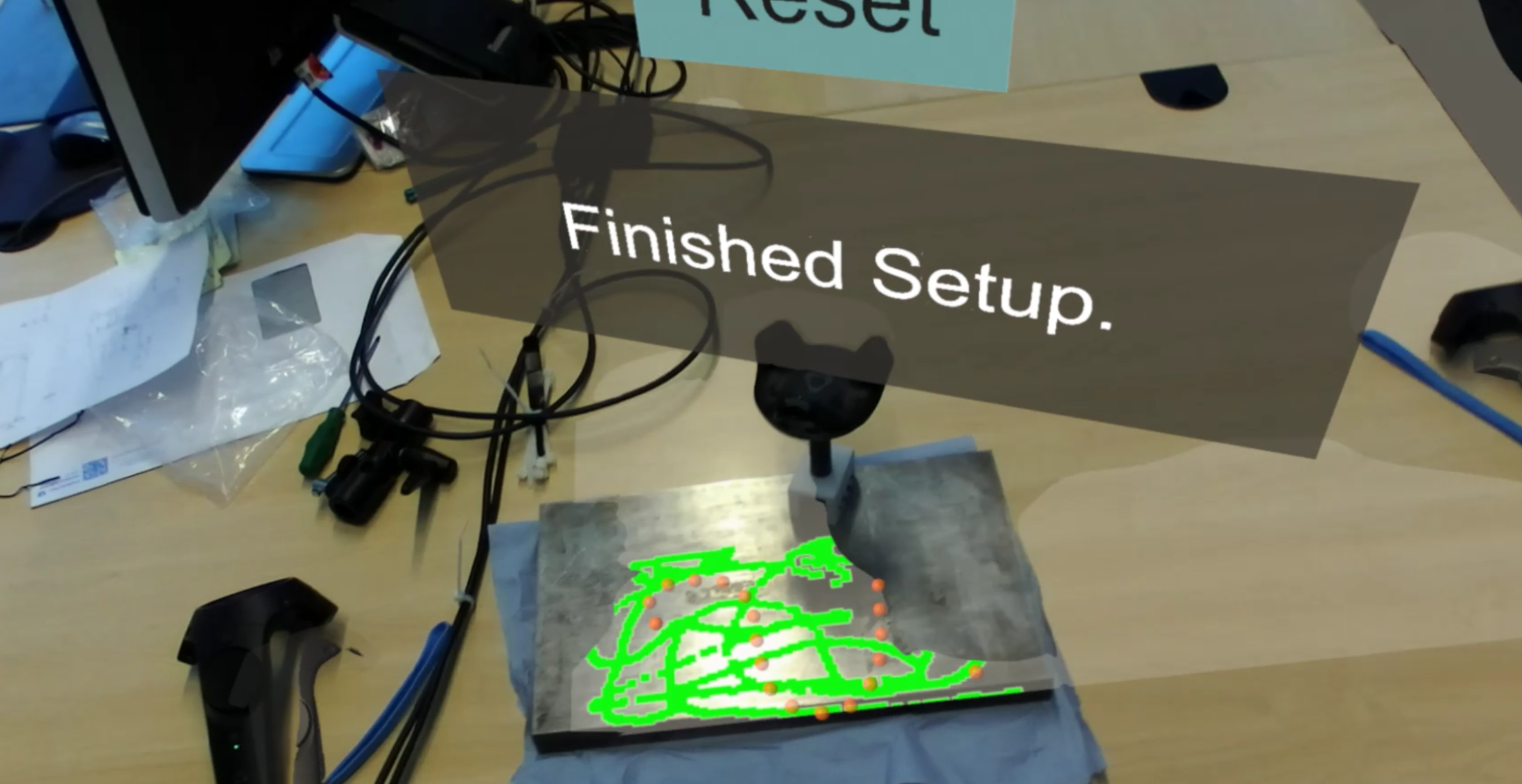November 2017 - July 2018
Internship and Bachelor-Thesis at Salzgitter Mannesmann Forschung GmbH (SZMF)
In this project I planned and developed an application to support the manual testing of steel pipes and slabs.
It was the first project at the SZMF research institution, that used VR/AR technology used in the gaming industry.
The application was implemented in Unity3D using the HTC Vive Tracker and a custom build mount for the Ultrasonic probe.
 The procedure of probing is augmented and extended by
The procedure of probing is augmented and extended by
- tracking the position and rotation of the probe relative to the specimen
- showing the area already probed in the HMD, with an attached stereocamera for AR
- using the position to create C-Scans
The project and its scientific evaluation involved the implementation of the Nelder-Mead fitting algorithm, a proprietary network-protocol and a evaluation of the Vive’s tracking precision. I learned a lot about assessing requirements and trying different approaches to improve an application. The git flow branching model as well as a documentation in a wiki were used throughout the project, to allow easier retracing of the software decisions, and architecture.
My Bachelor-Thesis can be downloaded here (german); the shorter paper about the project here (english).
Visualization of ultrasonic center-rays in a tablet AR-application using Vuforia
Following the successful Bachelor-Thesis, a smaller, more lightweight application prototype was created, to live visualize the ultrasonic soundwaves of the testing probe inside a cuboid specimen. I used raytracing to generate and render a polyline, reflecting inside the specimens collider. This was also archived using Unity3D and the Vuforia SDK, that is able to re-identify markers for the specimen and probe transformation in 3D-space.